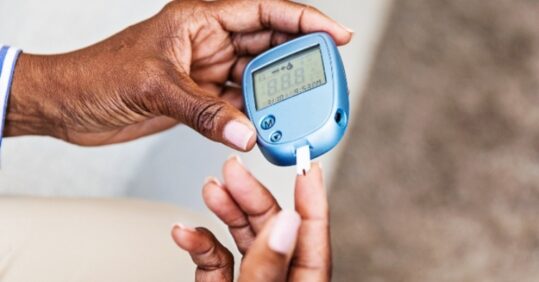Higher death rate from diabetic complication in deprived areas, Scottish study shows

Rates of a life-threatening diabetic complication are rising in Scotland, with people from socially deprived areas more likely to be hospitalised or die as a result, data has shown.
University of Edinburgh researchers, using National Records of Scotland data to track people with type 1 diabetes between 2004 to 2018, also found death rates from diabetic ketoacidosis (DKA) more than doubled overall between the two dates from 95 to 204 deaths per 100,000 people.
Related Article: Be alert to pancreatitis in patients using GLP-1 weight-loss drugs
DKA is a serious condition that can lead to diabetic coma – passing out for a long time – or death when the body runs out of insulin. Their cells do not get the glucose they need for energy and blood sure levels rise, which results in a build-up of chemicals called ketones. This cause the blood to become dangerously acidic, leading to DKA.
Among the 37,939 people with type 1 diabetes identified, over a quarter (27%) experienced a DKA event with 30,427 DKA hospital admissions and 472 deaths recorded from 2004 to 2018. Of those treated in hospital, 45% experienced at least one additional DKA event.
People in more socially deprived areas were more likely to be hospitalised and die from DKA throughout the study period, and women had higher rates of DKA hospitalisations than men, the scientists said.
Diabetes Scotland director Angela Mitchell warned the research ‘reinforces the urgent need to address the deep-rooted inequalities that persist within diabetes care in Scotland’.
Related Article: Low-energy diet improved eating disorder symptoms in patients with type 2 diabetes
She added: ‘It is time for a renewed and focused effort to end the disparities in diabetes care, and to address avoidable deaths from DKA.’
Rates of DKA events increased among all age groups over the study period, except those who were aged between 10-19 years when the study began. This group initially had the highest number of DKA events, but rates decreased over time.
University of Edinburgh epidemiologist Dr Joe O’Reilly said the ‘marked reduction’ in the rate of DKA events among the 10-19 year-old age group is ‘potentially associated with recent improvements in blood sugar levels that have been seen in this group’.
Related Article: Wales diabetes prevention programme cuts risk of developing type 2 diabetes by nearly a quarter
The researchers also found an association between insulin pump use or a DKA education course with better DKA outcomes, meaning wider access to these tools could prevent future DKA, he added.
Data last year on delays to diabetes diagnosis showed that between March and June 2020, 51% of children and young people were not diagnosed with diabetes until they developed DKA.

See how our symptom tool can help you make better sense of patient presentations
Click here to search a symptom




